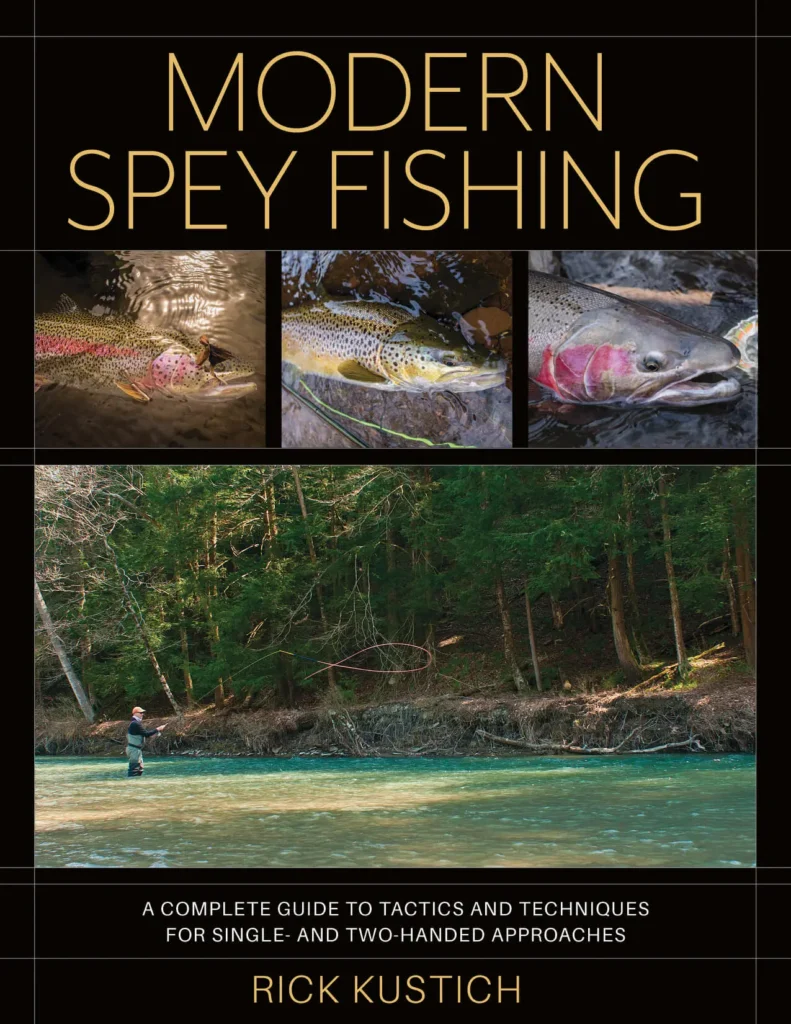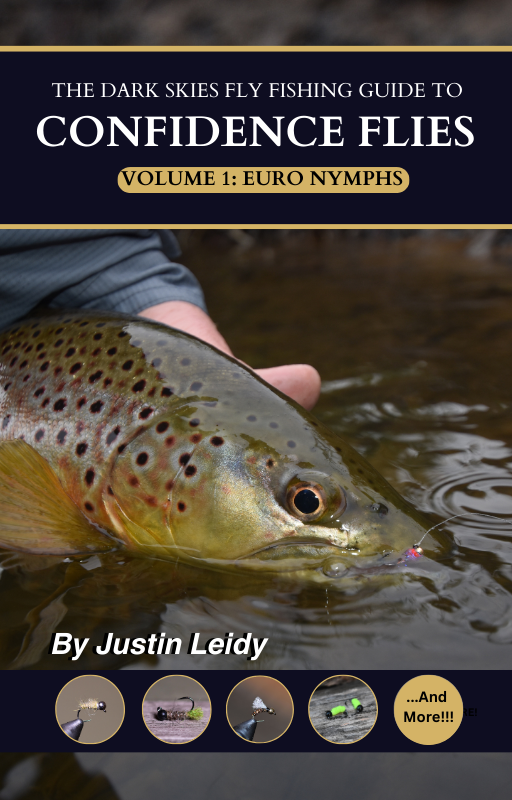Book Review: Modern Spey Fishing by Rick Kustich

I admit that I was fed up seeing endless online videos of fishers making thundering, yet elegant, two-handed Spey casts with ginormous fly rods across big rivers to wild chrome-colored salmon and steelhead moving up to spawn.
I wanted to do that. (Spey cast–not spawn; I’ve three kids already…)
So, I got my hands on a copy of Rick Kustich’s most recent book, Modern Spey Fishing: A Complete Guide To Tactics and Techniques For Single- and Two-Handed Approaches (Stackpole Books, 2023).
And I’m glad I did; it’s a fabulously informative book.
As an experienced writer, instructor, and fly fishing guide from Western New York, Rick really knows his Spey stuff. (He doesn’t look old enough, but he claims to have been fly fishing for five decades….)
A foreword by Spey fishing icon, Simon Gawesworth, gives serious credibility to the book.
Rick starts off by giving an historical perspective on Spey fishing; this section will fascinate those who have an interest in this approach to fishing and its origins in, and migration from, the United Kingdom to the United States as well as its subsequent development here.
He also explains the rods, reels, and lines of Spey fishing, including traditional Spey rods, trout Spey, and switch rods, among others. Critical to me was getting down some of the foreign-sounding terminology such as Skagit and Scandi lines.
Of course, a central part of the book is casting. I really liked the way Rick summarized the advantage of Spey casting:
Spey casting allows for an efficient 90-degree change in direction with only a limited amount of line passing behind the casting position. Combined with the power gained by the use of two hands, great distances can be obtained…
In other words, you can make a booming cast across a wide river to cover lots of water with your streamer or wet fly despite little or no room for a backcast due to fun-robbing, fly-snagging vegetation on the bank behind you.
Rick, of course, covers the basic casts including the Double Spey, Snap T (aka C Spey), Snake Roll, and Single Spey. Even better, Rick notes that these casts can be adapted to single-handed rods, which can be clutch along tight banks.
I used the Snake Roll with a single-handed rod on a recent trout trip.
The book doesn’t quit after showing and explaining the all-important Spey casts. It also gets into fly presentation, especially controlling the depth and speed of the fly line’s swing. Rick also writes about managing sinking tips and using “waking” dry flies for heart-stopping surface takes.
The book discusses Spey fishing tactics and gets into specific strategies for steelhead, Atlantic salmon, Pacific salmon, migratory trout and char, and smallmouth bass. I also liked Rick’s suggestion for targeting the annual shad run.
Modern Spey Fishing rightly spends 10-pages on the popular practice of trout Spey, which is helpful for those who want to cast a two-handed rod, but can’t get to the salmon and steelhead runs in the Great Lakes and or in the Pacific Northwest/Alaska.
A work on Spey fishing wouldn’t be complete without a discussion of the incredible, often intricate, streamer, wet, and dry flies for salmon, steelhead, trout, and smallmouth bass, among other variations.
Modern Spey Fishing is a great way to learn all about what Spey has to offer a fly fisher and apply this way of angling to their favorite home (or away) waters. Rick has been Spey fishing for 30 years and has studied with some of the best in the business.
My only possible criticism is that—at more than 200-pages of pictures and text—this uber-comprehensive angling book wasn’t more appropriately titled: The Encyclopedia of Modern Spey Fishing.
Maybe in the next edition?!
All kidding aside, if you’re curious about this type of fly fishing, want to start Spey fishing, would like to improve your Spey fishing, or you’re getting ready for a two-handed rod road trip, this book belongs on your bookshelf.
__________________
Dr. Peter Brookes is a multiple award-winning outdoor writer and content creator based in Virginia. He’s hoping to slay ‘em with Spey this fall on the Great Lakes’ tribs. BrookesOutdoors@aol.com
Have a fly fishing question you’d like answered? Drop us a line at info@darkskskiesflyfishing.com! If we use your question in a blog post or in the newsletter, we’ll send you a FREE fly box with a dozen of our favorite nymphs and dry flies!
Did You Find This Review Helpful?
Stay up to date with the Dark Skies Fly Fishing monthly newsletter for free and receive the latest posts in fly fishing news, tricks, tips, and techniques, stream reports, as well as updates on new flies added to the Online Store and exclusive discounts!
Sign Up NowDownload our eBook "Confidence Flies: Volume One, Euro Nymphs" for free today when you sign up for our newsletter!

